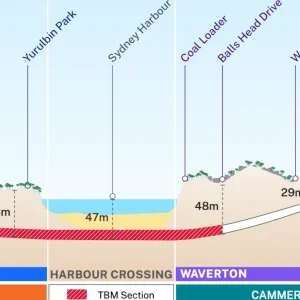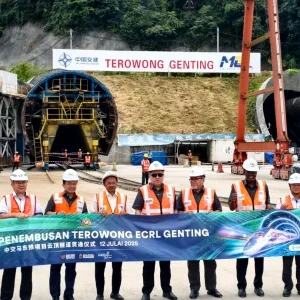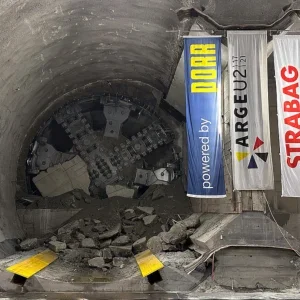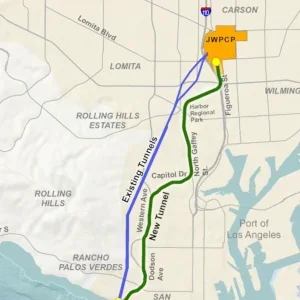To adjust to the varying geological conditions – soft ground, hard rock and the Lavanttal main fault zone in between – the single shield machine could be converted in-tunnel from EPB to hard-rock mode.
The holing through on June 17 forms part of the €297m lot 3 (KAT 3) contract which comprises two tunnels of 21km total length that form the central section of the Koralmbahn high-speed line. Spaced between 25-50m apart with cross passages every 500m, the two parallel bores run through the Koralpe mountains with overburdens of up to 1,200m.
Varying geological conditions and water pressures have seen contractor Porr use different methods to drive the tunnel: while the north bore was mined primarily by TBM in pressures of up to 5.9bar, the south bore – on which breakthrough occurred in August 2018 – was tunnelled using drill and blast. The cross passages were also excavated in parallel with the south bore construction.
Planned to open in 2023, the Koralm Tunnel will see trains running through at a top speed of 250km/hr, cutting the journey time between Graz and Klagenfurt from three hours to just 45 minutes. The Koralmbahn is a key component of the Baltic-Adriatic corridor spanning Poland, Slovenia and Italy, and is regarded as one of Europe’s most important north-south infrastructure projects.







